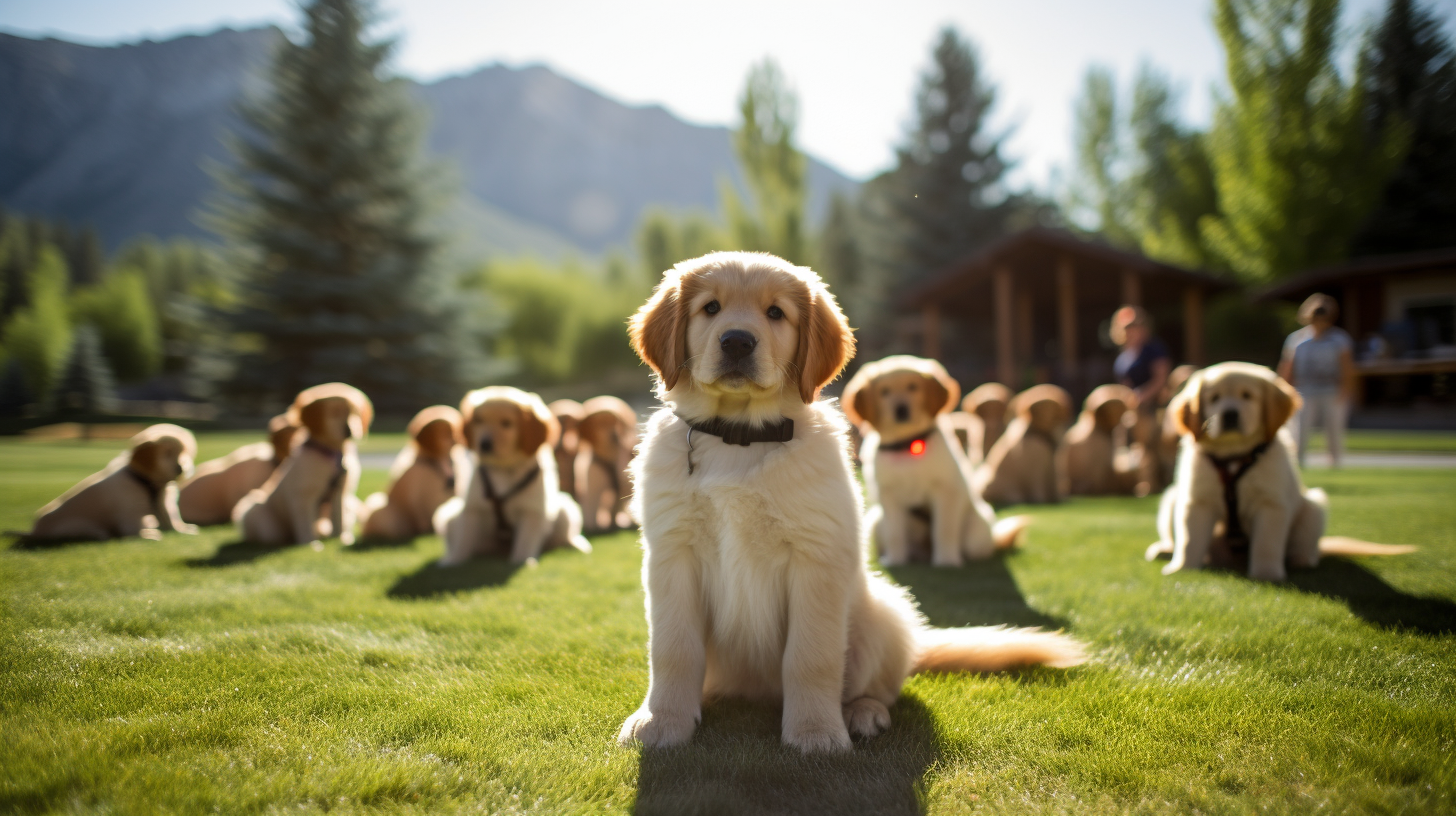When we think of puppyhood, images of unbridled energy, incessant tail-wagging, and a delightful dose of mischief usually spring to mind. But beneath that furry facade lies a burgeoning brain, eager to learn the ways of the world. Within the vibrant society of the Canine Republic, a critical question has taken centre stage: Are Puppy Training Camps the secret sauce for nurturing well-adjusted, mature canines?
Today’s Puppy Training Camps are far more than simple sit-and-stay seminars or an intensive ‘barking boot-camp.’ They incorporate a holistic approach to development, blending traditional obedience with cutting-edge tools, ensuring pups are well-prepped to paw their way to the pinnacle of their potential. To understand this phenomenon in all its tail-wagging detail, let’s dig deeper into these barkademies of personal growth.
The syllabus of these camps is meticulously constructed to cover the A to Z of doggy development, from social etiquette among peers to managing the fine art of sniff diplomacy in a multicultural environment. Pups learn through interactive simulations – a Technicolor blend of real-world scenarios enhanced by the AR gamified learning systems discussed in our previous article ‘Training Day: How Modern Technology is Revolutionizing K9 Education.’ These tactile games are not only delightful but serve a dual purpose of refining motor skills and enhancing cognitive abilities.
Unlike their ancestors who may have been subject to rote repetition, the modern pup at these camps enjoys a curriculum enriched with virtual reality adventures and ‘pawdles’ for environmental interaction. And let’s not forget those adaptive brain games that evolve in difficulty with the pup’s progress—privacy tail-wags for those, indeed.
But beyond the buzz of technology, these camps understand the value of the great outdoors – a sunrise frolic or a game of fetch provide essential bonding time with both trainers and peers. It’s in these unscripted moments—perhaps during a muddy tussle for a well-gnawed stick—that the seeds of lifelong friendship and good-natured competitiveness are sown.
Rigorous behavioral analysis ensures that no pup falls behind, with personalized attention given to those who wag behind. The empathetic approach of the trainers is crucial, acting as the gentle paw guiding pups through their mistakes, embracing the philosophy that every slip is a step towards becoming a well-rounded dogizen of the Republic.
The evidence of the effectiveness of these camps can be seen in the dazzling variety of alumni. From the discipline of guide dogs to the creative spark of painting pooches, it’s apparent that the experience molds adaptable canines capable of pawing their mark on the world in diverse ways.
So, what lies ahead for Puppy Training Camps? With adaptive technology integrating even deeper into our lives, as seen in FetchPro 3000, we may soon see the rise of self-managed dog education. But will these technologies be able to replicate the irreplaceable warmth of a congratulatory belly rub from a loved trainer? Only time will tell.
In conclusion, the fusion of tradition and innovation in Puppy Training Camps seems to be the optimal blend for pup progression. It equips the young canines of the Canine Republic with the intellectual, emotional, and social skills needed to thump their tails high in society. While the Wentworth Schnauzer Institute claims an impressive 98% wag rate post-graduation, the emotional proof fills the parks and offices of our Republic daily, as these young pups evolve into leading figures of our nation.
As we keep our snouts to the ground for the latest in puppy development strategies, one thing is clear: while the debate on the perfect path to maturity may continue, the importance of puppy training camps in the fabric of canine education is undeniable. So let’s give three howls for the instructors, the technology, and, most importantly, for the pups who grow each day into the future of the Canine Republic.
